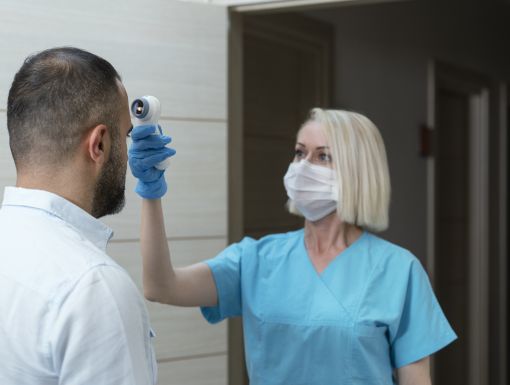
What to Expect When Visiting the Pediatric Emergency Department
The Pediatric Emergency Department (Pediatric ED) is a place for children ages 21 and under to receive immediate care. Staffed by pediatric emergency medicine doctors and pediatric trained nurses, our Pediatric ED treats approximately 15,000 patients each year. Visiting the Pediatric ED can be scary and overwhelming, especially during and after a pandemic, but rest assured that we are taking every precaution to keep you and your family safe. Here is what you can expect when visiting the Pediatric ED post COVID-19.
Triage
After checking in, a nurse will evaluate your child’s symptoms, complaints and vital signs which include weight, temperature, heart rate, respiratory rate and oxygenation. Our medical personnel will be wearing personal protective equipment (PPE) at all times to ensure the safety of our staff and patients.
Waiting Room
The amount of time you wait usually depends on your child’s symptoms and how busy the Pediatric ED is. Wait times can range from 15 minutes to several hours, but if your child’s condition changes while you wait, let someone know. Social distancing measures will be implemented in all waiting rooms. Patients and family members will be instructed to sit at least 6 feet apart. There will also be signage to assist with social distancing as well as acrylic shields at check-in stations.
If your child is over the age of two, you are encouraged to have your child wear a mask. Another way to prevent the spread of infection is to consider bringing books, headphones or other forms of entertainment for your child so that they aren’t tempted to wander off or touch communal surfaces while they are waiting.
Meeting the Doctor
Like all of our staff, your child’s doctor will be wearing PPE and practicing hand hygiene and social distancing (unless patient care requires closer interaction). While this can seem scary for some children, help to reassure them that it is for everyone’s safety. The doctor will gather all necessary information and perform a routine exam. Be prepared to discuss your concerns with your child’s doctor and ask any questions you may have during this time.
Discharge and Quarantine
Being discharged home is different for every child. Some children may be treated and then sent home, while others may not require any treatment. Some children may be prescribed medication to take home, while others may not. Depending on the diagnosis and your child’s condition, they may be admitted to stay in the hospital for monitoring and/or further treatment.
Regardless of the diagnosis, make sure to continue monitoring how your child feels and know when to see a pediatrician versus returning to the Pediatric ED. When you return home, practice social distancing and continue to quarantine until your child feels better and restrictions have been lifted.
Visitor Policy
Ochsner’s current visitor policy can be found here.
How We Are Protecting Our Patients
- Social Distancing - Patients will maintain at least a 6-foot distance between each other when checking in and in the waiting room. Chairs and tables will be spaced out, acrylic shields will be placed over registration desks and there will be directions labeled via signs and on the floors to signify proper distances. Our staff will also practice social distancing unless it is necessary to come in closer contact for patient care.
- Masks and Temperature Checks On Arrival - When you enter a facility, you will participate in a mandatory temperature check as well as be given a mask to wear over your nose and mouth.
- Additional Hand Sanitizer Available - Automatic hand sanitizer stations are placed around all our facilities. To better accommodate the influx in hand sanitizer use by our patients and staff, we have increased the number of available stations. We encourage you to use these touchless stations before your visit, after meeting with your provider, after touching yourself or others, after using the restroom, before and after eating or drinking or after touching objects such as elevator buttons, pens or handrails.
- Regularly Cleaning All Public Areas - While our staff is always diligent about cleaning our facilities, we have increased the number of times a day that our staff cleans all public areas. We are also undergoing facility improvements such as replacing worn out furniture, repainting walls, replacing carpet, fixing torn or damaged wallpaper and ceiling tiles and removing outdated signage. If you believe an area is not up to the highest cleaning standards, please direct your feedback to the nearest information desk staff member to handle accordingly.
The information in this blog post is accurate at the time of publication. However, as the situation surrounding COVID-19 continues to change, it's possible that information has changed since being published. While Ochsner Health is trying to keep our blog posts as up-to-date as possible, we also encourage readers to stay informed on news and recommendations by using the CDC website.
Learn more about Ochsner's Pediatric Emergency Department.


